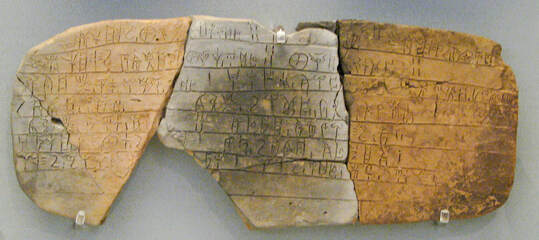Technology
 The word technology has its origins in the Proto-Indo-European (PIE) root teks (to weave; the origin of textile, among many other words).
1
The PIE word teks-na meant the craft of weaving or fabricating.
The word technology has its origins in the Proto-Indo-European (PIE) root teks (to weave; the origin of textile, among many other words).
1
The PIE word teks-na meant the craft of weaving or fabricating.The word technology comes from Greek tekhne (art, skill, craft in work; method, system, an art, a system or method of making or doing) and Greek logia, legein (to speak, to tell; the character or deportment of one who speaks of a certain subject). Greek tekhne + logia = tekhnologia (systematic treatment of an art, craft, or technique). Tekhnologia originally referred to the systematic treatment of grammar and rhetoric; i.e., the construction and use of language. 2
In the 1610s, the word technology came to English meaning a discourse or treatise on an art or the arts.
The word technological, in reference to terminology, is from the 1620s; meaning of or relating to technology is from around 1800. The word technologist, meaning one versed in technology, is from 1803.
Technology, meaning the study of mechanical and industrial arts; e.g., spinning, metalwork, and brewing, is from 1859.
The term ‘high technology’ is from 1964; high-tech is from 1972. Technie is from 1984.
What is the difference between technology and high technology? High technology is a relative term simply meaning the latest and greatest cutting edge technology. Low technology 3 refers to simple or traditional technology; for example, a slide rule or a vacuum tube. In brief, when high tech gets old it becomes low tech!
1 PIE teks also meant to make wicker or wattle fabric for mud-covered house walls. Other words from PIE teks include architect, context, polytechnic, pretext, technical, technician, text, and others.
PIE teks is related to many other ancient words; e.g., Sanskrit taksati (he fashions, constructs) and taksan (carpenter); Avestan tasa (ax, hatchet); Old Persian taxs (be active); Latin texere (to weave); Slavonic tesla (ax, hatchet); Old Irish tal (cooper’s ax); Old High German dahs (badger, builder), Latin texere (to weave), and Greek tekton (carpenter). Interestingly, the Latin word for carpenter, lignarius, is unrelated to PIE teks; instead, it comes from lignum meaning wood. The Latin word carpentarius means a wagon maker.)
2 Merriam-Webster Dictionary.
3 Low technology is an example of a retronym. The Oxford Dictionary defines a retronym as a new term created from an existing word in order to distinguish it from the meaning that has emerged through progress or technological development (e.g., cloth diaper is a retronym necessitated by the fact that diaper now more commonly refers to a disposable diaper).
Image: https://en.wikipedia.org/wiki/Linear_B
Writing on stone: Linear B, one of the earliest forms of an alphabet, from 1450 BCE. The script was used in Myceanaean Greek which preceded the classical Greek of the ancient world by several centuries.
Reference: Online Etymological Dictionary, https://www.etymonline.com/
Published on February 07, 2022 21:06
No comments have been added yet.



